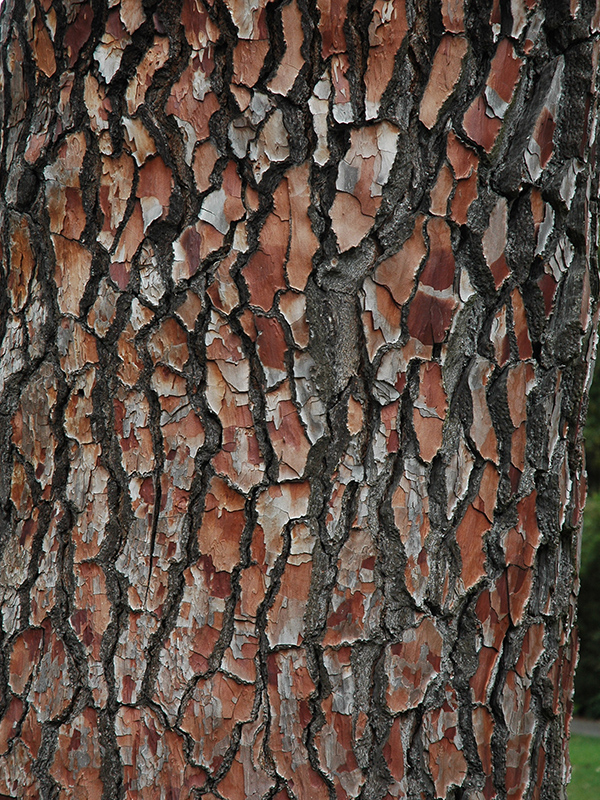| General Description | A large tree, with a red to deep brown bark, it's deep crevices throughout give it a scale to plated look. The foliage comes in pairs of bluish-green, tough needles with a hint of yellow and the cones are hard and dark green in the first few years becoming a medium brown as they mature. |
| ID Characteristic | The needles are fairly hard and sharp compared to most pines. Its bark resembles that of an armoured plating and has large reddish brown scales with deep cracks. |
| Shape | In its youth, it is a conical shaped evergreen with upward curving branches with tall trunk with a rounded crown as it matures. |
| Landscape | Mainly found in the agriculture sector especially in France. An excellent tree for shade or windbreaks. |
| Cultivation | It is a very hardy tree and can grow in almost any soil conditions and is very pollution tolerant. It prefers slightly moist to dry acidic soils and can handle long periods of drought and little nutrients but cannot tolerate wet areas. |
| Pests | Honey fungus, tree rust, sawfly, the pine adelgid and pine weevil. The pine weevil attacks the younger trees eating the bark and exposing the cambium to the elements and diseases. |
| Habitat | Areas with hot summers and mild moist winters. Low lying forests with acidic sandy soils. |
| Bark/Stem Description | A thick reddish-brown, almost black in some regions. It looks as if it is covered in a scaled plating with deep recesses throughout its trunk. |
| Flower/Leaf Bud Description | A golden brown colour, covered in oval shaped scales that have long tips ending with small white hairs, erect and cylindrical in shape roughly 4-6 cm in length. |
| Leaf Description | Grown in pairs 8-20 cm in length with a colour that slightly varies from bluish-green to a hint of yellow. The needles are notably long and firm; very tough for a pine tree. |
| Flower Description | Flowers are monoecious, located at the tips of branches in clusters of dark red cones. |
| Fruit Description | The cones are a conical shape with a thick base and dark green in colour and are found in groups of 2-5, 10-15 cm in length and 4-6 cm wide. As they mature they become hard and heavier and change to a medium brown colour. The seeds are a dark brown to black with large wings allowing for easy transport in the wind. |
| Colour Description | The needles are a bluish-green with a small amount of yellow, cones are a medium brown during maturity. The bark is a reddish-brown, almost black that is layered in a thick scale like appearance. |
